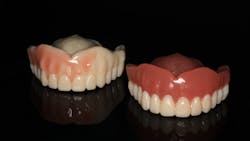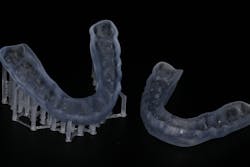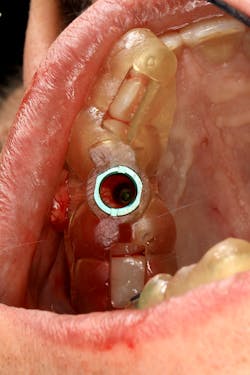Dental 3D printing: The technology of now
Every Christmas there is one gift that is the gift of the year for children. One that comes to mind is the popular Furby that was released in 1998. It was the must have gift for children and stores could not keep them in stock. I don’t think dentistry is much different. It may not occur during the holidays, but year-in and year-out there is that piece of technology, new material, or gadget that makes waves across the industry. I think 2021 will finally be the year of the 3D printer.
There have been a number of hurdles that in my opinion have really kept 3D from becoming mainstream, which I cite below. With some significant improvements in the industry, innovators pushing to make things easier, and a year in which most of us are ready to look to the future, 2021 is the year for the majority to jump into 3D printing. Why, you may ask. Let’s take a look.
At 3D Dentists, we break down our 3D printing course into four steps: capture, design, print, process. It used to be rather frustrating to make your way through these steps to get to an actual clinical outcome, especially when we move beyond just printing models and into the more advanced workflows such as night guards, surgical guides, and printing dentures. Third-party software and work-arounds jaded the exciting new technology. What we’ve seen lately is advancements in these four steps that have broken down many of the barriers that kept the majority from adopting this technology. To make sense of this, let’s take a close look at the four steps.
Design: In my opinion, design has been one of the biggest factors keeping dentists from getting into not only 3D printing but from expanding into advanced workflows that require a design prior to printing.
Until recently, third-party options have been limited, leading to do-it-yourself approaches to get these designs. We now have labs providing designs at very reasonable fees versus fully producing the clinical result. An example of this is SprintRay Dashboard 2.0, which provides dentists with a nightguard design in fewer than 48 hours for just $25. You can quickly bypass the work and investment to get good designs and move straight to step 3, printing.
Printing: In my experience, the struggle with early dental printers was limited materials and software functions. For example, on the nightguard side we only had access to resins that were brittle and of lesser quality than what we could get from a traditional lab. Fast forward to last year and we began to see improved resins such as Keystone’s KeySplint soft resin, which actually has some flex, give, and polishes nicely like a well-made lab nightguard.
Process: Of course, after you print you aren’t quite ready for a clinical application. There are an array of hacks on social media such as the Amazon nail curing lights or wash setups that look like a combination of eighth grade science lab and a Tupperware set. These were effective for some early adopters, but for the majority to get involved streamlined processes must be in place. We finally have them. With the release of the SprintRay Pro Wash/Dry to go along with the company’s Pro Cure, we now have a package that can effectively get us through step 4 without any work-arounds.
By running every dental workflow through these much-improved steps, we finally have streamlined solutions that make 3D printing in dental quicker, more predictable, and more economical. If you’ve been waiting for the majority to jump in, now is the time.
SULLY SULLIVAN, DDS, also known as The Millennial Dentist, is a fourth-generation dentist practicing in Nashville, Tennessee, at Sullivan Dental Partners. Dr. Sullivan created the Millennial Dentist podcast in 2017 to help his colleagues go further, faster. When not practicing or podcasting, Dr. Sullivan travels to speak about including CBCT, 3D printing, CAD/CAM technology, and guided implant surgery. He is also an instructor at 3D Dentists in Raleigh, North Carolina.



